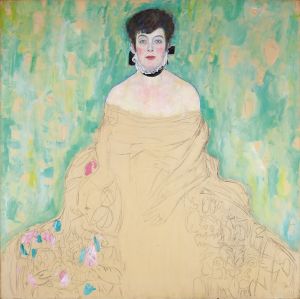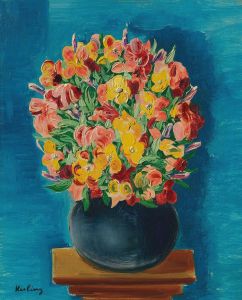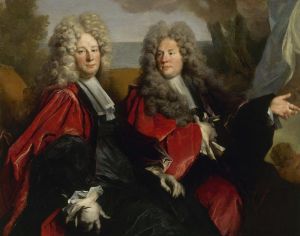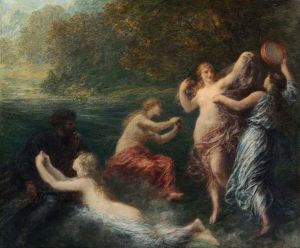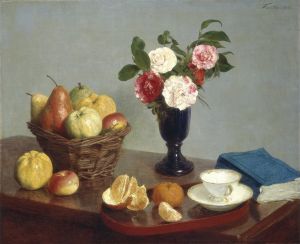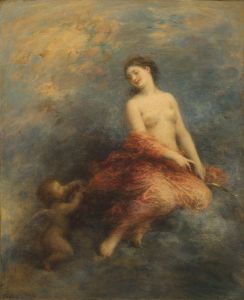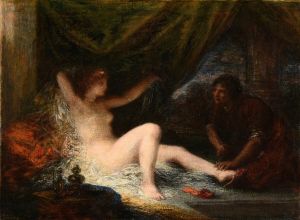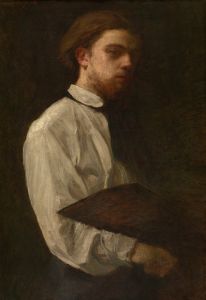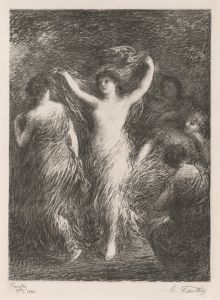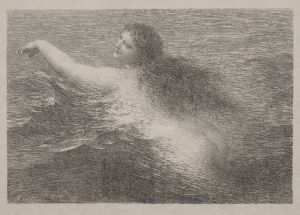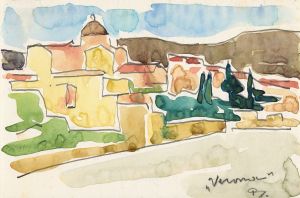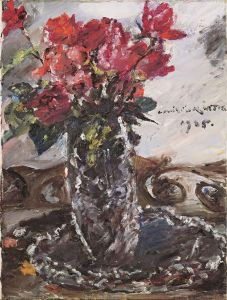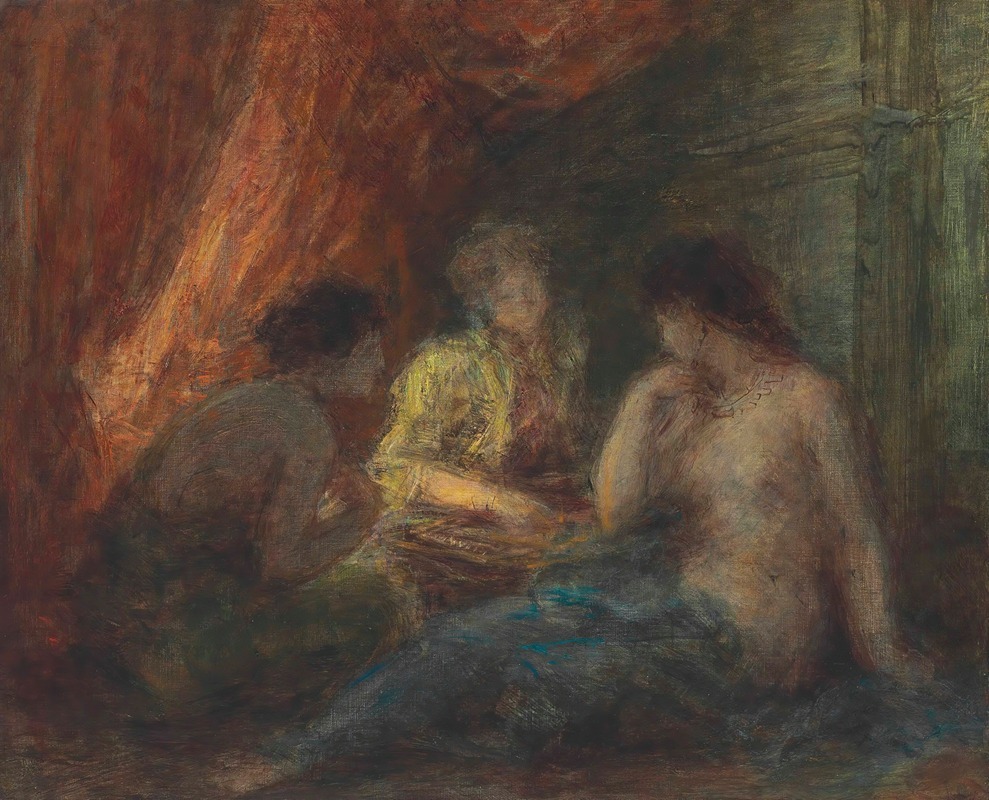
Le jeu
A hand-painted replica of Henri Fantin-Latour’s masterpiece Le jeu, meticulously crafted by professional artists to capture the true essence of the original. Each piece is created with museum-quality canvas and rare mineral pigments, carefully painted by experienced artists with delicate brushstrokes and rich, layered colors to perfectly recreate the texture of the original artwork. Unlike machine-printed reproductions, this hand-painted version brings the painting to life, infused with the artist’s emotions and skill in every stroke. Whether for personal collection or home decoration, it instantly elevates the artistic atmosphere of any space.
Henri Fantin-Latour was a renowned French painter and lithographer, celebrated for his exquisite still lifes and group portraits of Parisian artists and writers. One of his lesser-known works, "Le jeu," is a painting that reflects his interest in capturing intimate and domestic scenes, although detailed information about this specific painting is limited.
Fantin-Latour was born on January 14, 1836, in Grenoble, France, and he moved to Paris in 1850. He studied at the École des Beaux-Arts and worked in the Louvre, where he copied old masters, which significantly influenced his style. He became associated with the Impressionists, although his work remained more traditional and less experimental compared to theirs. His friendships with artists like Édouard Manet and writers like Charles Baudelaire placed him at the heart of the Parisian art scene.
Fantin-Latour is best known for his still lifes, particularly his flower paintings, which are celebrated for their detail and subtle use of color. These works demonstrate his mastery of light and texture, capturing the delicate beauty of petals and leaves with remarkable precision. His portraits, on the other hand, often depict groups of artists and intellectuals, providing a window into the cultural milieu of 19th-century Paris.
"Le jeu," which translates to "The Game," is presumed to be one of Fantin-Latour's genre paintings, a category in which he explored scenes of everyday life. While specific details about "Le jeu" are scarce, it can be inferred that the painting likely depicts a domestic or social scene, possibly involving figures engaged in a game or leisure activity. This aligns with Fantin-Latour's interest in portraying the private and personal moments of his subjects, a theme evident in several of his other works.
Fantin-Latour's approach to painting was characterized by a meticulous attention to detail and a preference for subdued, harmonious compositions. His works often convey a sense of calm and introspection, inviting viewers to appreciate the quiet beauty of the scenes he depicted. Despite his connections to the avant-garde movements of his time, Fantin-Latour maintained a commitment to realism and traditional techniques throughout his career.
In addition to his paintings, Fantin-Latour was also an accomplished lithographer. His lithographic works often featured imaginative themes, including mythological and musical subjects, reflecting his interest in the interplay between visual art and other forms of expression.
Henri Fantin-Latour passed away on August 25, 1904, in Buré, Orne, France. His legacy endures through his contributions to both painting and lithography, and his works continue to be celebrated for their technical skill and aesthetic beauty. While "Le jeu" may not be as widely recognized as some of his other pieces, it remains a testament to his ability to capture the nuances of human experience through art.






